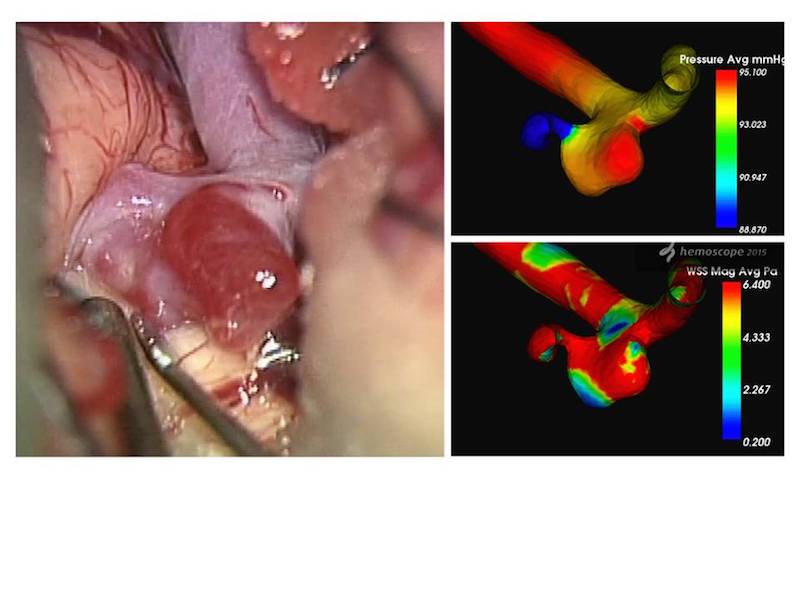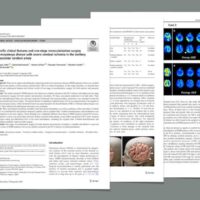当科の堀 恵美子先生が未破裂脳動脈瘤の流体力学的解析(CFD)を用いて、術前に動脈瘤壁が菲薄化している部分を予測できることを証明しました。今回の結果は「脳神経外科」誌に掲載していただきました。
堀 恵美子、梅村公子、堀 聡、岡本宗司、柴田 孝、久保道也、堀江幸男、高 正圭、柏崎大奈、黒田 敏
簡便で単一のソフトウェアによる未破裂脳動脈瘤のCFD解析 — 術前に動脈瘤壁の菲薄化を予測できるか?
脳外46:199-206, 2018
https://www.ncbi.nlm.nih.gov/pubmed/29567869

A Voyage to Depth of Neuroscience Vol. 46
Hori E, Oya KU, Hori S, Okamoto S, Shibata T, Kubo M, Horie Y, Koh M, Kashiwazaki D, Kuroda S.
Computational Fluid Dynamic Analysis of Intracranial Aneurysms Using Newly Developed Software:Can It Predict the Thin-Walled Region of Intracranial Aneurysm Preoperatively?
No Shinkei Geka. 2018 Mar;46(3):199-206
Abstract
OBJECT:
Recent studies have shown that computational fluid dynamics(CFD)analysis is useful to evaluate flow dynamics of intracranial aneurysms. However, CFD analysis still requires high costs and substantial time even now. This study aimed to evaluate whether newly developed software can shorten the time for analysis and serve useful information during clipping surgery for intracranial aneurysms.
METHODS:
CFD analysis was performed in 55 unruptured cerebral aneurysms in 51 patients. The time required for analysis of each aneurysm was recorded. On the basis of CFD analysis, both pressure and wall shear stress(WSS)were calculated as the values at the systolic and diastolic phases, and also the mean value through one cardiac cycle. These data were compared between thin-wall points and other points within each aneurysm.
RESULTS:
The average time required for analysis was 3 hours, ranging from 1 to 15 hours. The CFD data could be referenced during surgery in each patient. The pressure in about 93% and 80% of the thin-wall points was higher than that at other points within each aneurysm in the systolic and diastolic phases, respectively. However, there was no significant correlation between WSS and wall thickness in each aneurysm.
CONCLUSION:
This study clearly shows that newly-developed software is simple and requires much shorter time for CFD analysis than previous methods. Higher pressure through the cardiac cycle may efficiently predict a thin-wall region within intracranial aneurysms, which strongly suggests that CFD analysis would be a valuable tool to determine the treatment strategy in patients with unruptured aneurysms.









